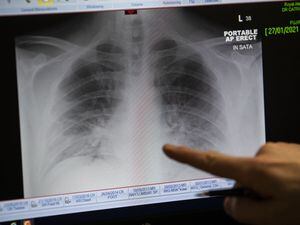Community diagnostic centres ‘may struggle to live up to ministers’ promises’
The Government has committed £2.3 billion for the launch of up to 160 of the ‘in the community’ centres by March 2025.

Just one in five of the Government’s flagship community diagnostic centres are actually “in the community”, according to new analysis.
Ministerial pledges to bring NHS diagnostic facilities “closer to where people live” have been called into question after it emerged that 47 of the 92 up and running have been placed on an existing healthcare facility.
New analysis from The King’s Fund, shared with the PA news agency, found that only 17 of the sites are in the “community” – such as in shopping centres – while others are on existing hospital or GP surgery sites.
The centres have been promoted to bolster existing services in England so people can get tests or scans done more quickly, closer to home and reduce unnecessary hospital trips.
The Government has committed £2.3 billion for the launch of up to 160 of the centres by March 2025.
And the Department of Health and Social Care announced on Monday that the centres have already carried out two million tests since being set up in October last year.
The new King’s Fund report highlights that there are currently more than 1.5 million people waiting for a key test or scan in England.
Charlotte Wickens, policy adviser at The King’s Fund and author of the briefing report, said that the centres have “much to learn” from the Covid-19 vaccination programme where people were easily able to access vaccination centre in places “convenient and familiar”, such as churches and temples.
Part of the backlog in diagnostics is due to staff shortages, particularly across specialist areas such as radiology and pathology, and issues with outdated equipment including MRI scanners and X-ray machines.
But these problems have not been addressed with the new centres and without investment in these areas then the new community diagnostic centres (CDCs) may struggle to reach their goals, The King’s Fund added.
Ms Wickens said: “The government has claimed that Community Diagnostic Centres will be key to ‘busting the backlog’, and there has been much talk of centres opening in football stadiums and retail centres.
“But the location of many centres around existing health care facilities should raise questions over whether the government really will achieve its goal of moving diagnostic tests closer to people’s homes and communities.
“If we look back to the Covid-19 vaccine rollout, vaccines were provided not only in GP practices or hospitals but in places that were that convenient and familiar and this was particularly important to offering equal access to everyone, wherever they lived.
“The success of the CDCs will become clearer when we see if the people using them would have been less likely to access services otherwise.
“So, while we welcome more investment to improve under-funded diagnostic services, we urge the government to be clear on how these new centres will deliver the volume of tests needed to reduce waiting lists and ensure equal access to all.
“Unless the workforce crisis is addressed and there is real investment in new equipment and technology, they are unlikely to be able to fix the diagnostic backlog alone.”
In an accompanying blog post, she added: “Only an estimated one in five are based in the community (such as in shopping centres) rather than on a traditional health care site (such as a hospital or a primary care centre).
“This may undermine the promise to have the CDCs offer ‘more accessible and convenient’ access to diagnostics.”
She notes that the centres are adding “much needed diagnostic capacity” but “there is a disconnect from what is offered – care that is both closer to home and more convenient – and what is being delivered, which is diagnostics services delivered in mainly traditional NHS settings”.
Every year the NHS conducts around a billion diagnostic tests, and demand is growing. For instance, the number of colonoscopies and MRI scans increased between 4 and 7% in the three years to 2018/19.
The report highlights how the standard that patients should wait less than six weeks for a diagnostic test has not been met since February 2017.
Commenting on the analysis, David Thomas, head of policy at Alzheimer’s Research UK, said: “Community diagnostic centres like these are a positive development, but we need to see targeted investment in NHS diagnostics to really speed up dementia diagnoses.
“Too many people are facing a two-year wait between referral and diagnosis and the government’s target on dementia diagnosis hasn’t been met since before the pandemic.”
Wes Streeting, Labour’s shadow health and social care secretary, said: “First the Government promised 40 new hospitals which turned out not to be new, now they are promoting ‘community diagnostics centres’, which are not actually in communities – it’s just the latest example of the Conservatives overpromising and underdelivering.
“After 12 years of Conservative governments, patients are waiting longer than ever before for tests and scans.
“Labour will oversee the biggest expansion of the NHS workforce in history, training the doctors and nurses we need to diagnose and treat patients on time again, paid for by abolishing the non-dom tax status.”
A Department of Health and Social Care spokesperson said: “Community diagnostic centres provide easier and more convenient access to vital services in the community and have already delivered more than two million life-saving tests, checks and scans to bust the Covid backlogs, backed by £2.3 billion.
“All centres are located on sites that are accessible for patients, level up access to services and reduce waiting lists. This includes shopping centres and football stadiums but also GP and hospital sites, for example the Hemel Hempstead CDC is on a hospital site in the centre of town, next to a shopping centre.
“The NHS is growing its diagnostic workforce capacity to make sure CDCs have the right staff and investing in digital technology to improve productivity and give clinicians access to the latest tools.”





